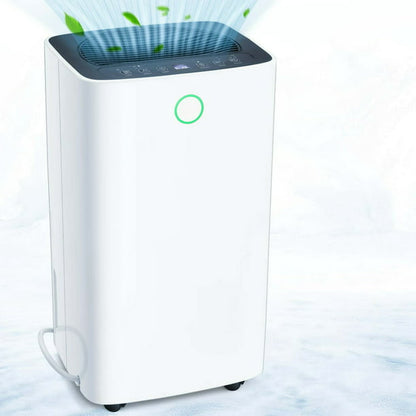
The role of dehumidifiers in construction has expanded significantly in recent years, as You. S. contractors increasingly prioritize moisture control to improve material durability and indoor air quality. Dehumidifiers have become essential tools, especially in projects 小型抽濕機 located in humid regions or during boisterous months, where excess moisture positions a risk to both materials and worker safety. In today’s construction landscape, where timelines and quality are paramount, dehumidifiers provide an effective solution to moisture-related challenges on job sites.
In regions with high dampness, such as the the southern area of and eastern United states, construction sites are particularly liable to moisture. Wood, concrete, and drywall, which are popular materials, can suffer from contact with high moisture levels. For example, wood can become warped, drywall can have mold, and concrete may not cure properly, all of which make a difference the integrity of a structure. Dehumidifiers address these issues by creating a controlled environment that reduces the risk of moisture-related damage, ensuring that materials remain stable and durable.
Dehumidifiers also play an important role in maintaining air quality. High dampness levels can promote the growth of mold and the spread of allergens, which compromise indoor air quality. This is especially important on construction sites, where multiple workers face potential air quality hazards. By controlling dampness, dehumidifiers help contractors create safer working environments, preventing health issues related to poor air quality. Contractors are increasingly aware of the benefits of dehumidifiers, as air quality regulations have become stricter and the health ramifications of mold exposure are more widely understood.
Another significant benefit from using dehumidifiers in construction is that they allow contractors to accelerate project timelines by optimizing drying out times for materials such as paint, adhesives, and concrete. In humid conditions, these materials can take longer to dry, leading to delays and increased labor costs. Dehumidifiers help contractors maintain a comfortable pace, letting them meet deadlines avoiding potential delays. For larger commercial projects, where even minor delays can be costly, the use of dehumidifiers can be particularly valuable.
When selecting dehumidifiers for a project, contractors must consider factors like the climate of the construction site, the size of the area, and the specific needs of the materials being used. Industrial dehumidifiers are typically preferred for large, open job sites, as they can handle a lot of moisture removal. For smaller projects or surrounded spaces, portable dehumidifiers may suffice, providing targeted moisture control where needed. Contractors in regions with consistently high dampness levels often opt for high-capacity dehumidifiers that can run continuously to ensure a reliable, low-humidity environment.
In conclusion, dehumidifiers offer You. S. contractors an effective means of improving project outcomes, protecting material quality, and ensuring a safe and healthy indoor environment. As moisture control continues to be a key aspect in construction success, dehumidifiers will remain an important asset in contractors’ toolkits, supporting quality, efficiency, and air quality on job sites across the united states.
Beyond material maintenance, dehumidifiers contribute to maintaining indoor air quality on job sites. Poor air quality, made worse by high dampness, can lead to the growth of mold, dust, and volatile organic compounds (VOCs). With increasing knowing of the health ramifications of mold and VOCs, air quality has become a significant consideration in construction practices. By keeping dampness levels at bay with dehumidifiers, contractors can provide a healthier environment for both construction workers and future building occupants.
The use of dehumidifiers can also help contractors stay on schedule by reducing drying out and curing times. When dampness levels are way too high, certain materials, such as paint and adhesives, may take longer to dry, causing delays. Dehumidifiers facilitate faster drying out by maintaining an optimal dampness level, allowing contractors to keep projects on track. This is particularly valuable in large-scale construction projects, where delays can be costly and impact multiple facets of the build.
Selecting the appropriate dehumidifier depends on factors such as the site’s climate, the scale of the project, and the type of materials used. Industrial dehumidifiers, which are designed for large spaces, can remove substantial amounts of moisture, making them ideal for big job sites. On the other hand, portable dehumidifiers may be better suited for smaller or surrounded spaces within a construction site. Contractors in particularly humid states like Birmingham, al, Mississippi, and Atlanta often use high-capacity dehumidifiers to manage challenging conditions and ensure a controlled environment.
To sum up, dehumidifiers are a fundamental element of modern You. S. construction practices. By investing in effective dehumidification systems, contractors can improve material durability, maintain air quality, and reduce project delays. As the industry places a greater focus on sustainability and occupant health, the role of dehumidifiers in construction will only continue to grow.
